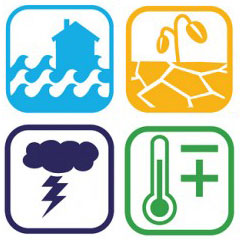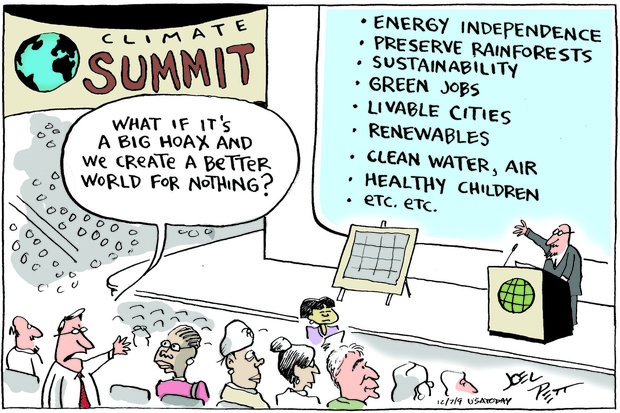Climate Change
Climate Change: The Thermal Threat

Climate change is a controversial, much-debated environmental concern that has gained traction in the past few decades due to the increasingly noteworthy data on global temperature changes. It is an enduring, overarching, and very real issue that demands attention and action because of its far-reaching destructive effects that put both natural and man-made living systems alike in harm’s way.
Climate change is a controversial, much-debated environmental concern that has gained traction in the past few decades due to the increasingly noteworthy data on global temperature changes. It is an enduring, overarching, and very real issue that demands attention and action because of its far-reaching destructive effects that put both natural and man-made living systems alike in harm’s way. Because of its capacity to alter habitats, life cycles, and ecological services, this phenomenon is a key threat to biodiversity all over the world.
To set things straight, climate change does occur naturally over time. However, this supposedly natural process has turned into a major problem in recent years due to the influence of human behavior. Rapid, insufficiently regulated, and unsustainable consumption of fossil fuels and overproduction of greenhouse gases are speeding up the changes and effects to global climate patterns at an alarming rate. Worse yet, studies are indicating that, while it’s not too late to temper and adapt to the immediate harsh effects, irreversible damage has already been done.
|
Climate Change Defined
Climate change, while implicitly a straightforward concept, has gone by varying definitions through years of usage in scientific and policy-making literature. How the term is used bears important implications on how it is approached and dealt with.
As defined by the United Nations Framework Convention on Climate Change (UNFCCC) in 1994, climate change is “attributed directly or indirectly to human activity that alters the composition of the global atmosphere and which is in addition to natural climate variability observed over comparable time periods.”
More recently, the UN-supported Intergovernmental Panel on Climate Change (IPCC) re-established the definition of climate change as “a change in the state of the climate that can be identified (e.g. using statistical tests) by changes in the mean and/or the variability of its properties, and that persists for an extended period, typically decades or longer. It refers to any change in climate over time, whether due to natural variability or as a result of human activity.”
While people tend to use the terms interchangeably, “climate change” and “global warming” are distinct, albeit very closely related concepts. More accurately put, the former is intended to refer to a natural process, whereas the latter was coined to describe the effect of human-induced emissions of greenhouse gases that bring about increases in the Earth’s surface temperatures.
Regardless of the differences in meaning, both concepts are involved in important global environmental developments that merit due attention and consideration when pushing forward socio-economic policy on international, national, and local community levels.
|
Proof of Climate Change
The concept of climate change has long been a subject of debate. Some argue that recently observed climate-related phenomena are merely instances of extreme weather and that contemporary climate science is fear-mongering by emphasizing the worst-case scenario. However, the signs that science has gathered over the years are hard to dispute; climate change on a consistent, global scale is undeniably occurring.
The US National Oceanic and Atmospheric Administration confirmed the occurrence of global climatic change through observation and measurement of ten key physical features of the planet. (Source: www.climate.noaa.gov/warmingworld)
Ten critical indicators, as observed over longer periods of time (decades’ and centuries’ worth, in fact) and summarized by US government’s National Oceanic and Atmospheric Administration (NOAA) below, serve as irrevocable evidence. Seven of these indicators – land surface air temperature, sea-surface temperature, marine air temperature, sea level, tropospheric temperature, ocean heat content, and specific humidity – are expected to increase in a warming world. Meanwhile, snow cover, sea-ice extent, and glacier mass decline in the event of planet-wide warming. Based on 2009 data, NOAA confirmed that notable shifts in all ten indicators suggest the reality of a rapidly changing global climate.
A graph released by the United Nations Office for Disaster Risk Reduction released in 2012 exhibits the uptrend in frequency of climate-related disasters around the world over the past three decades. (Source: www.unisdr.org)
In addition to these indicators, recent meteorological events have reflected the influence of an abruptly changing climate in the form of extreme weather patterns. The United Nations Office for Disaster Risk Reduction, in its 2011 annual report, highlighted the incidence trend of climate-related disasters during the period of 1980-2011. The figures show that the frequency and severity of storms and flooding have been on a significant upward trend all around the world. Typhoons, for example, that have wind speeds of 180-185kph and higher have noticeably been on the rise. Incidences of extreme temperatures have also increased during this timeframe, albeit at a lesser, but no less alarming rate.
Observations of this nature are important to note because instances of severe weather have massive direct impacts on impact human populations all over the world, with more particular risks and perils threatening those in developing and emerging nations.
An editorial cartoon that appeared on USA Today in December 2009 – just before the proceedings of the 2009 United Nations Climate Change Conference in Copenhagen began – gained immense popularity for its clever insight. (Source: USA Today/Joel Pett)
FPE and Climate Change
The harsh impacts of global temperature shifts brought about by climate change to island nations such as the Philippines are legitimate causes for concern in terms of biodiversity conservation. Especially vulnerable to the devastating repercussions of this phenomenon are low-lying coastal regions and other biogeographically isolated areas, which are abundant in this archipelagic country.
Hence, climate change is one of the most important environmental agenda for FPE, as determined in collaboration with the organization’s Regional Advisory Councils. Recognizing the current climate change dilemma as one of the leading causes of biodiversity loss, FPE pushes for mitigating and adaptation measures through site-specific, multi-faceted strategies and solutions that aim to minimize harmful emissions and waste, pursue the adoption of renewable energy sources, and promote a climate-resilient Philippines. Indeed, millions of Pesos’ worth of investments in FPE-supported conservation sites will ultimately go to waste if climate change would only further accelerate the already alarming rate of biodiversity loss here.
|
Further Reading: Recommended Primers on Climate Change
To learn more about climate change and topics and indicators related to it, FPE recommends the following material, which are available in full online:
|
References
- United Nations (UN). 1992. United Nations Framework Convention on Climate Change. (Online: http://unfccc.int/essential_background/convention/items/6036.php)
- Intergovernmental Panel for Climate Change (IPCC). 2007. Climate Change 2007: Synthesis Report. Geneva, Switzerland. (Online: http://www.ipcc.ch/publications_and_data/ar4/syr/en/mains1.html)
- National Aeronautics and Space Administration (NASA). 2008. What’s in a Name? Global Warming vs. Climate Change. Last accessed on November 7, 2013, http://www.nasa.gov/topics/earth/features/climate_by_any_other_name.html)
- Arndt DS, Baringer MO, and Johnson MR (Eds). 2010: State of the Climate in 2009. Bulletin of the American Meteorological Society, 91-7, S1-S224. (Online: http://www.ncdc.noaa.gov/bams-state-of-the-climate/2009.php)
- United Nations Office for Disaster Risk Reduction (UNISDR). 2012. Annual Report 2011: UNISDR Secretariat Work Programme 2001-2011. Geneva, Switzerland: United Nations International Strategy for Disaster Reduction. (Online: http://www.unisdr.org/files/27627_ar2011v2.pdf)
- Pulhin J. 2013. Climate Change and Biodiversity. Speech delivered during FPE National RAC-Partners Meeting; May 20, 2013; Quezon City, Philippines.

 DISPLAY CALENDAR
DISPLAY CALENDAR



 Read Policy Briefs
Read Policy Briefs
 View Our Partners
View Our Partners
 Access Grants MIS
Access Grants MIS
 Login to Webmail
Login to Webmail